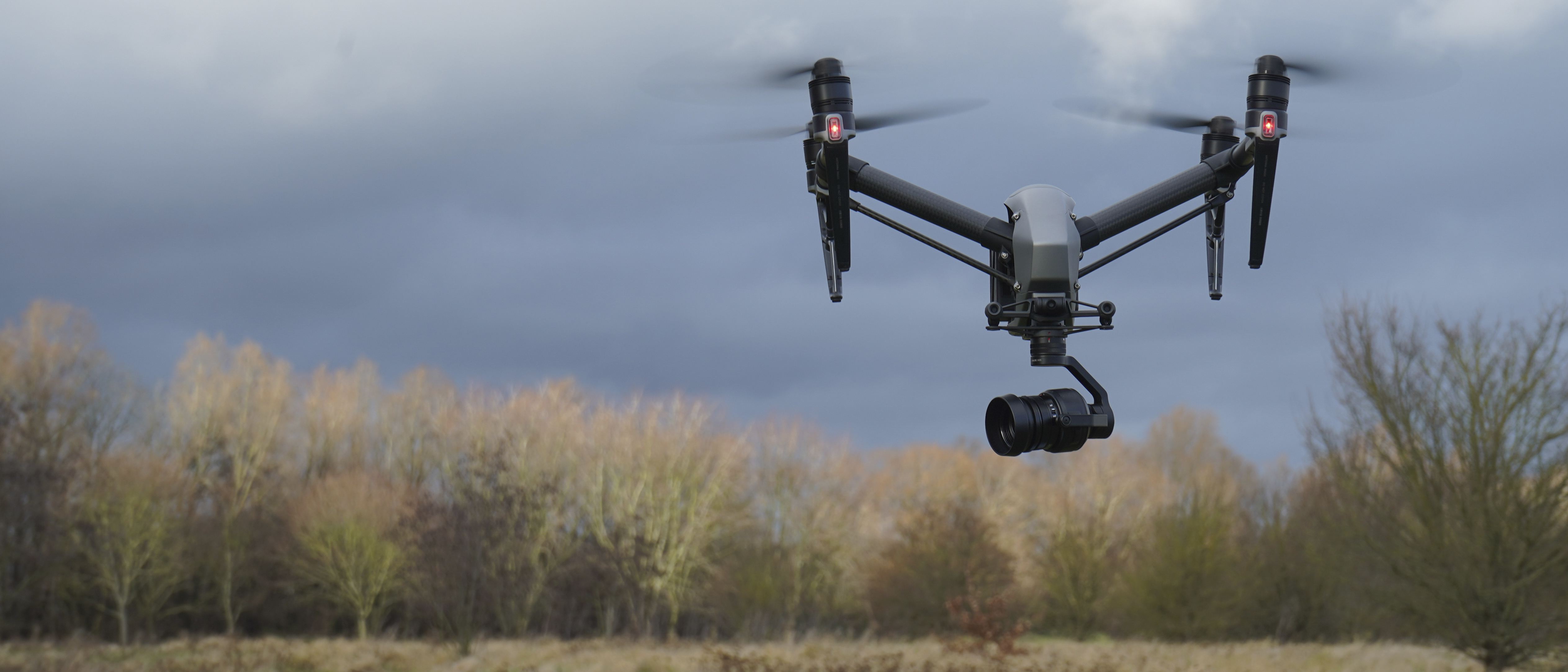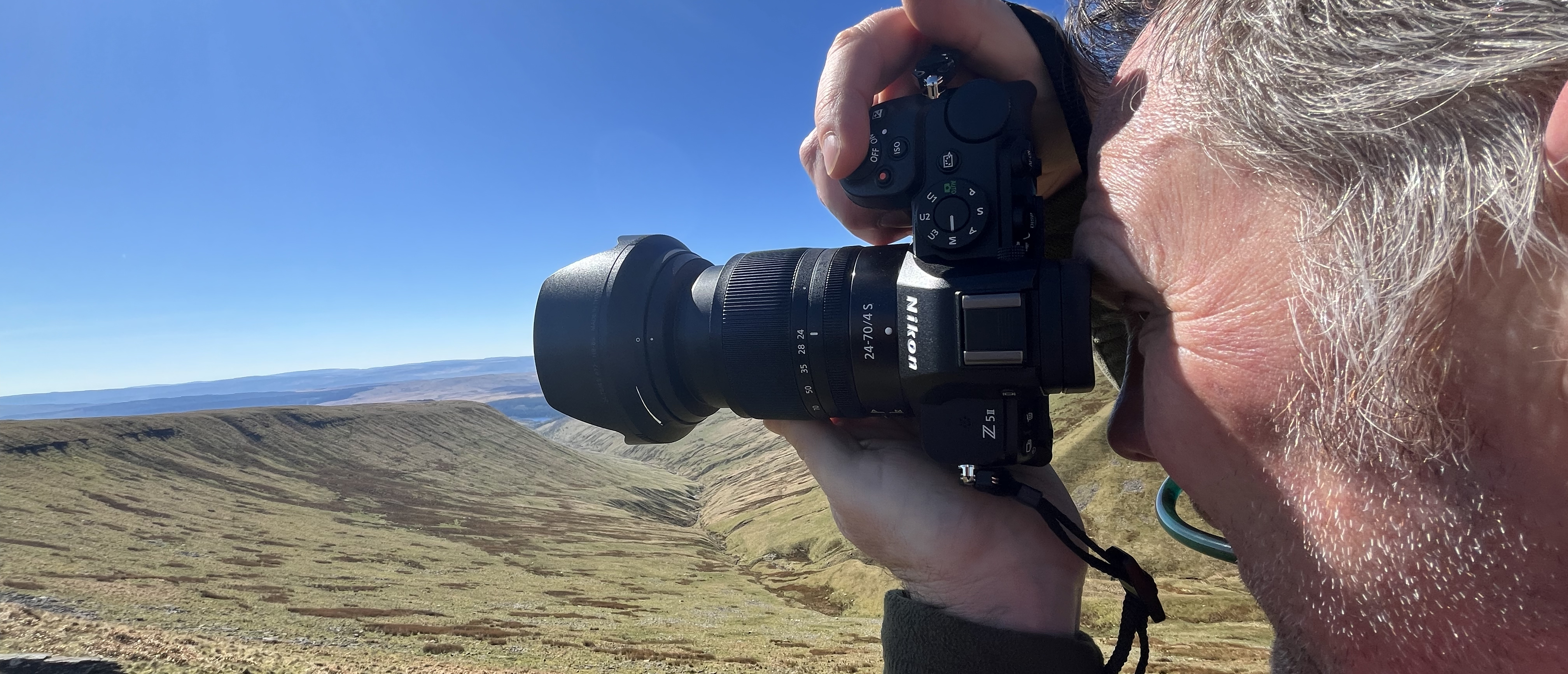Digital Camera World Verdict
The DJI Inspire 2 still offers features which sets it apart from recent competitors (even those with ‘Cine’ in their name). That is the ability to physically re-shape itself to suit the camera, the option to change lenses, and the option to host a separate camera operator. For all this you pay a lot in terms of flight time and, well, money but you get a machine which is still peerless and a feature-rich app.
Pros
- +
Dual operator allows second pilot to control camera
- +
Interchangeable cameras and lenses
- +
Airframe lifts above camera, out of shot at any angle
- +
ProRes option
Cons
- -
DJI SSDs are costly
- -
Weighty and less than portable
- -
Doesn’t support Zenmuse X9 – life limited?
Why you can trust Digital Camera World
DJI’s own store puts the Inspire 2 under the ‘Professional’ heading and the 2021 DJI Mavic 3 in ‘Consumer’ but the truth is not so simple. Given all that has happened since the Inspire 2 first took off, we thought it’d make a lot of sense to review it not in the context of its original launch (which was alongside the Phantom 4 Pro) but in an era in which the folding Mavic 3 Cine seems, in some respects, to offer more than its unarguably bigger brother.
The Inspire 2 is not even a little bit shy about its size – it isn’t just big, but it doesn’t fold down to an especially portable shape either. The quad’s four motors are attached by two T-shaped arms, the outer end of which is held the fuselage before take-off, then positioned above it once in flight so the camera can rotate with its view unobstructed by legs. This is mesmerizing, but the downside is that the whole ‘T’ is solid and the only thing the drone can do to minimize its size for transport is to move into a middling position, level with the fuselage, while you must remove and stow the camera.
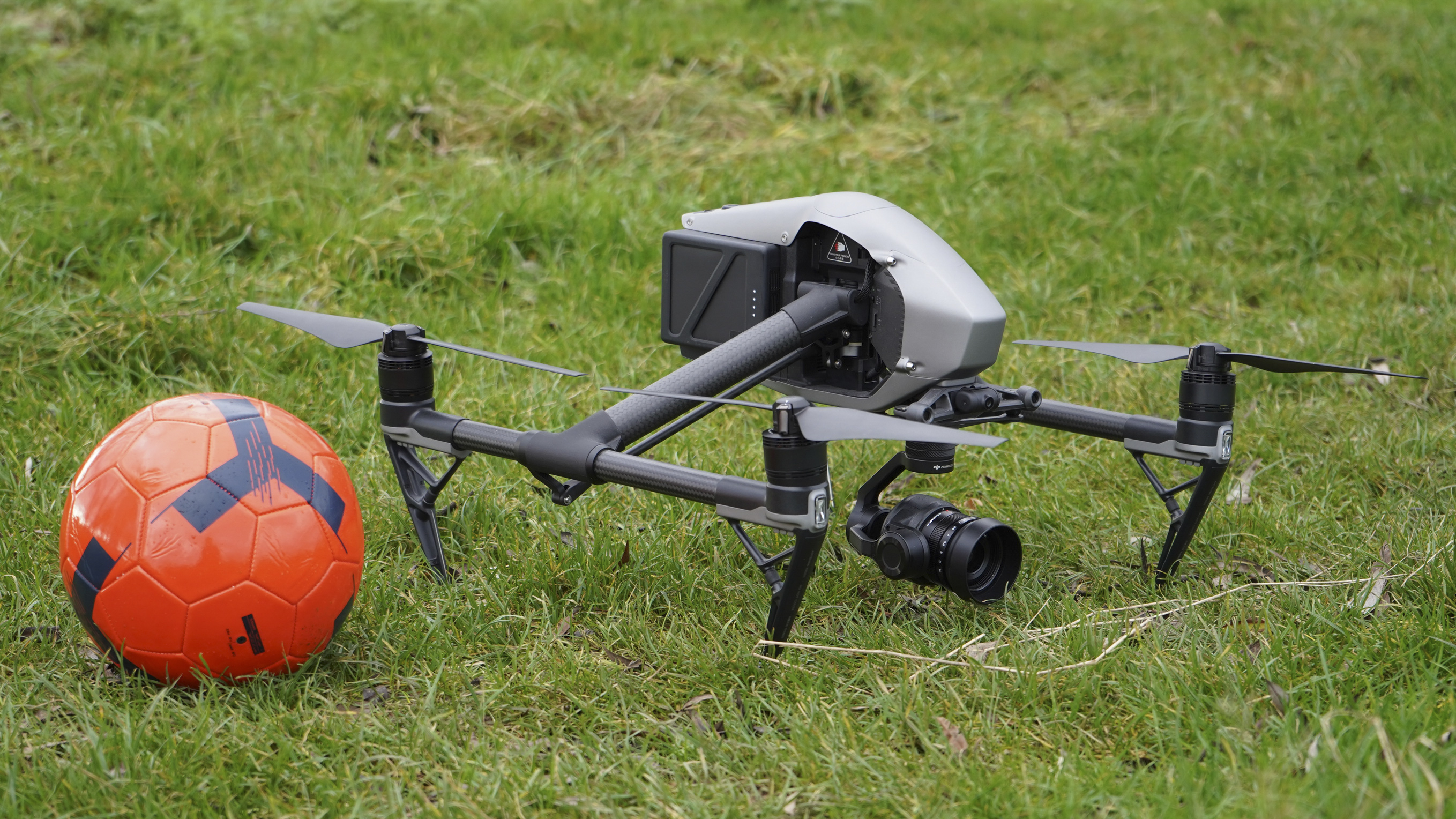
In other words, a shoot with the Inspire 2 is going to be one in which the drone makes its presence felt, but the glimmering reward at the end of the Faustian bargain is the creative control. Control which, however much the latest Mavic might promise, it cannot offer. Quality is another matter.
Strictly speaking, the Inspire 2 is available without a main camera (there is a forward-facing camera whatever), or with a choice of the Zenmuse X4S (with a 1-inch sensor and fixed lens), the Zenmuse X5S (which allows for interchangeable lenses) and the Zenmuse X7.
That isn’t without its own problems too, of course; all of the available cameras are permanently mounted to their gimbals so none are cheap, even though the X4S offers nothing other DJI drones don’t (why you’re unlikely to find or want that model). The X5S and above can be sold with an Activation Key for CinemaDNG and Apple ProRes, which unlocks the processing capabilities for rapid capture of up to 20 stills or use of the editor-friendly compression formats. This can also be acquired later, at $1000 / £1000 for CinemaDNG or $500 / £550 for ProRes 422 HQ and 4444 XQ, with a slight discount for the pair.
Read more: DJI Mavic 3 Cine vs Inspire 2
The SSD media is removable, unlike the Mavic 3, but it doesn’t come cheap, perhaps even $2000 / £1600 for 960GB in the CINESSD. The workflow is also much easier with an SSD reader connected to your computer. Without the SSD, the Inspire 2 won’t manage the full 5.2K or 6K (with the Zenmuse X7) which can feel a little like being cheated by your camera. 4K 60fps is allowed without the SSD, but it isn’t captured at the camera’s full field of view; it visibly punches in (though this can be useful for some framing).
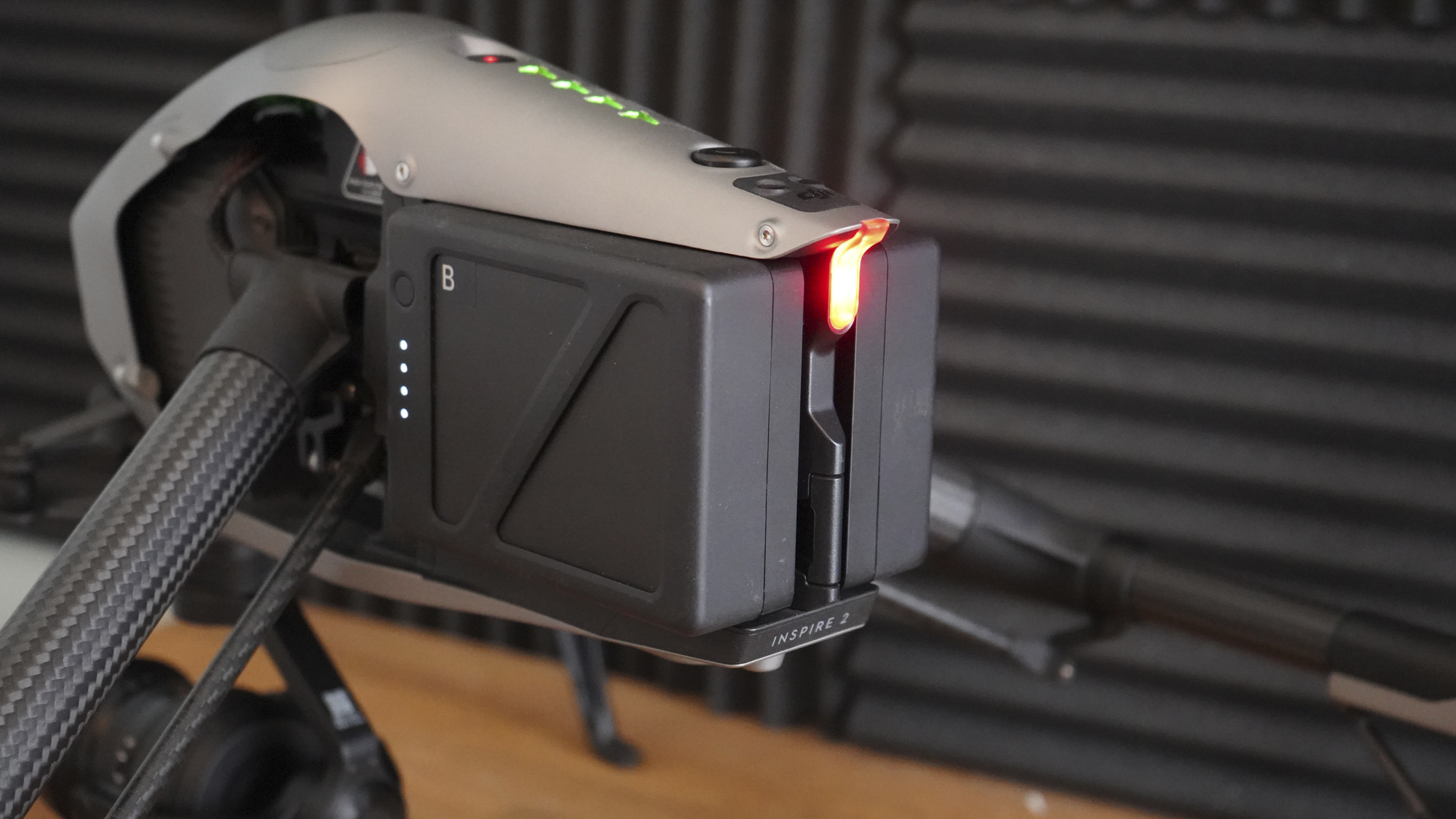
The dual batteries are a clearly visible (and wallet-impacting) aspect of the design, but they are not the only redundant system on board to provide additional safety; the signal processors, IMU and barometers also do too. These don’t hurt in getting professional work where you need approval, while DJI’s range of compatible accessories might help when it comes to creative requirements.
DJI Inspire 2: the drone
As we said, it’s big. Before you even put a useful camera and gimbal on the airframe, with two batteries, weights 3440g (just over 7.5 pounds) and the take-off weight can easily be over 4000g. Given that the machine is 605mm (23.8 inches) measured diagonally – not including the propellors – you’re not going to be launching this from your hands. Nor is transporting it that straightforward, especially once you start to build a collection of batteries.
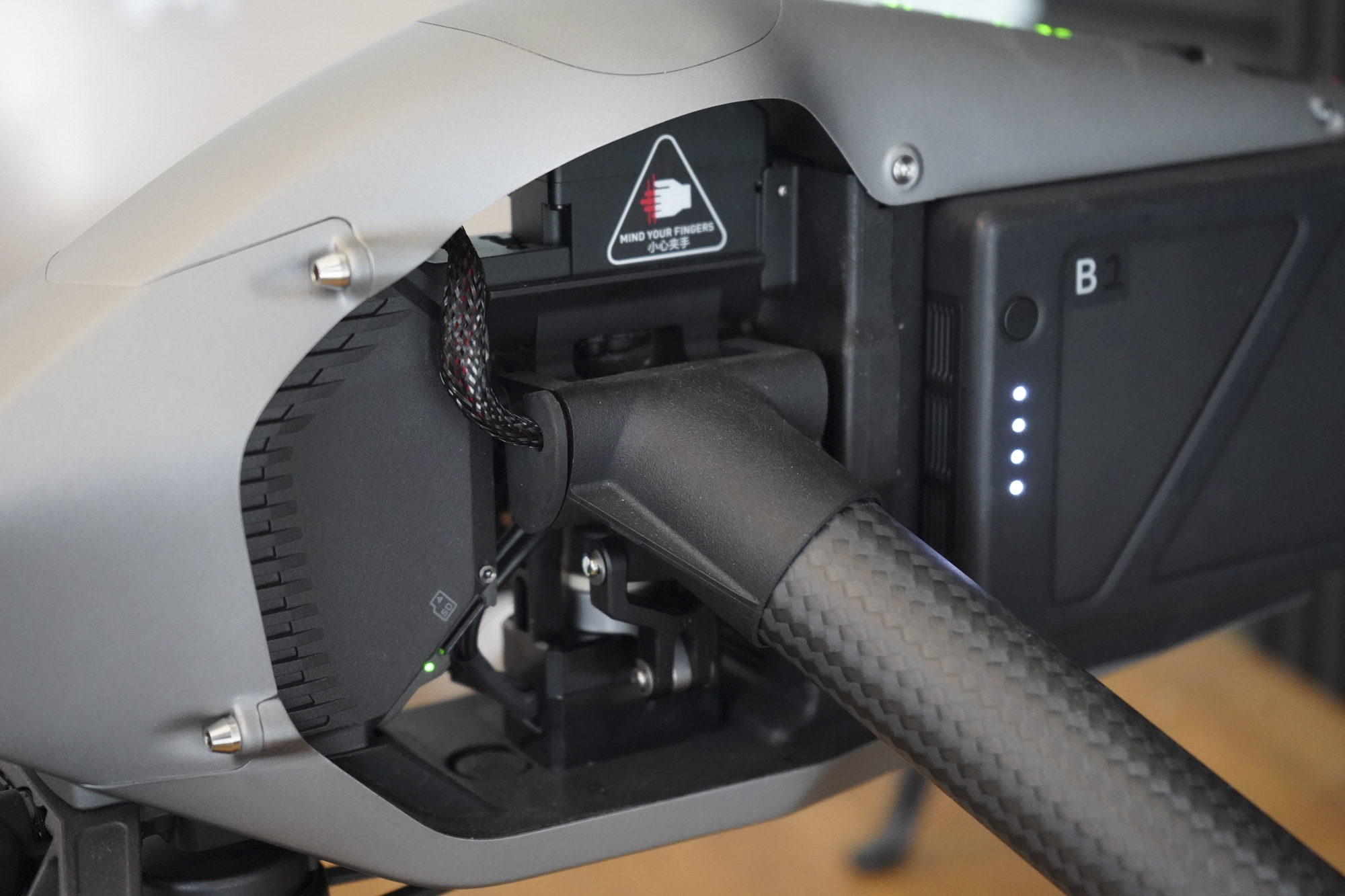
While the machine looks impressive, and if you accept that the shape-changing design is the best way of freeing the camera from obstruction, it is not without design issues. The one which caught us most frequently – familiar with its predecessor as we are – was that the admittedly striking magnesium alloy hull also seemed keen to slice the tips of our fingers off when we lifted the drone to move it. Sure, there is a warning sticker, but it’s such a natural lifting point. The button-inside-a-button battery release didn’t seem the most practical solution (we always wanted both or neither to come off, so why make it fiddly?) though it must be said that the legs seem able to cushion a fairly firm stop if needed and they did stay out of shot for us. A very sharp direction change can spoil things though.
The hull surrounds the mechanism which moves the motors arms between their three positions; storage, landing, and in flight. Unless you choose otherwise, the drone will automatically arrange itself into landing position once you’re nearing the ground (1.2m) which should prevent any nasty accidents. Mounted away from the fuselage at the front of the drone are the forward visual sensors (to prevent collisions) and a tiny FPV camera between them. There are also upward-facing sensors to make collisions with ceilings less likely, effectively equipping the Inspire 2 to take on studios or indoor sports venues.
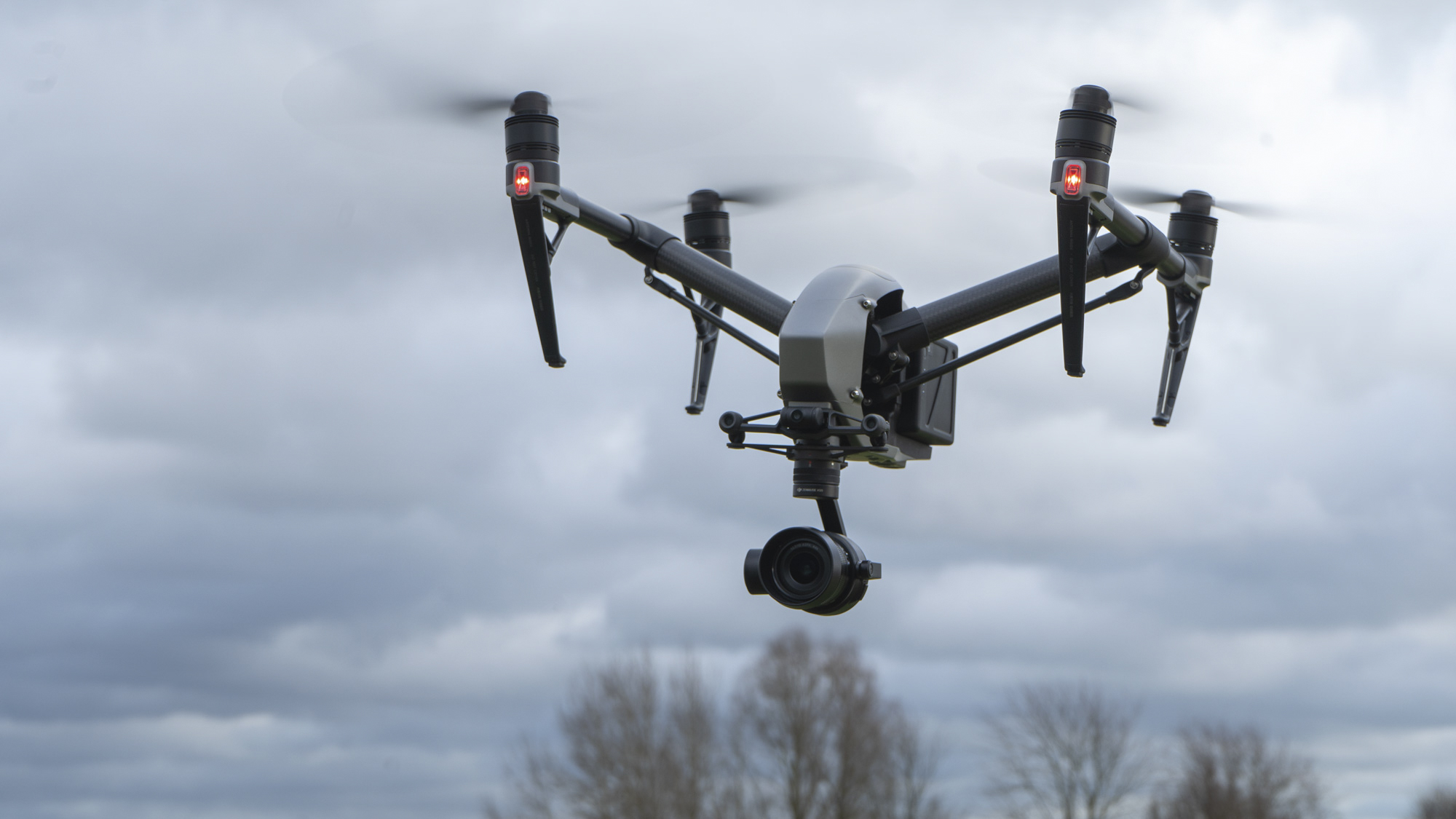
Take off beats any other drone by a mile; once you have been through what can only be called a rigmarole of attaching the propellors (they do not fold up), and the camera, and in all likelihood a ‘drone dance’ calibration you are rewarded by watching the machine push itself aloft then watch as a tiny motor whirrs and re-shapes the airframe so the camera is suddenly dangles naked beneath the machine. A machine which can do 58mph (93kph), well in excess of the Mavic 3’s 42mph so we can only say take care not to clip the ground. (We can’t say for sure but we can tell you that you do it with an Inspire 1 and the gimbal will snap, rendering the camera in need of replacement too!) Despite that, we did get a lot of speed warnings on an only quite windy day, though at least the software allowed us to do something about it.
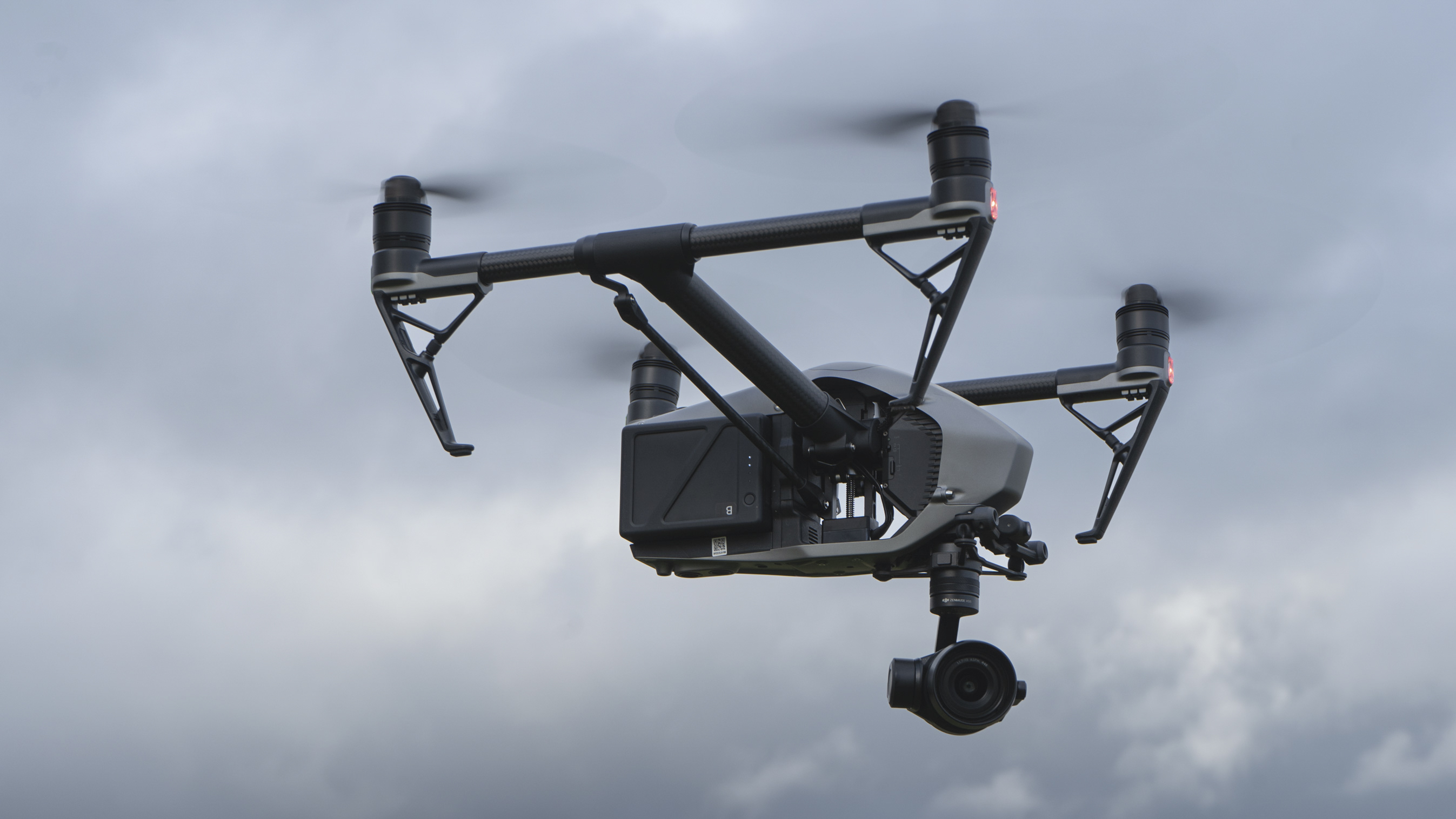
Luckily the Inspire 2 will fly itself to some extent. It includes Spotlight Pro, a feature which allows the drone to lock onto and track a subject regardless of the direction the drone is flown in. That means it’s possible to highlight your subject and the main camera will follow them while you position and re-position the aircraft. With practice the results can look great – as good as dual-operator shots. You must, however, not get confused as to which view is which on your monitor; ideally always pilot the drone by watching it. We appreciated that the app doesn’t insist on centering your subject – you can frame your shot with a drag of the finger.
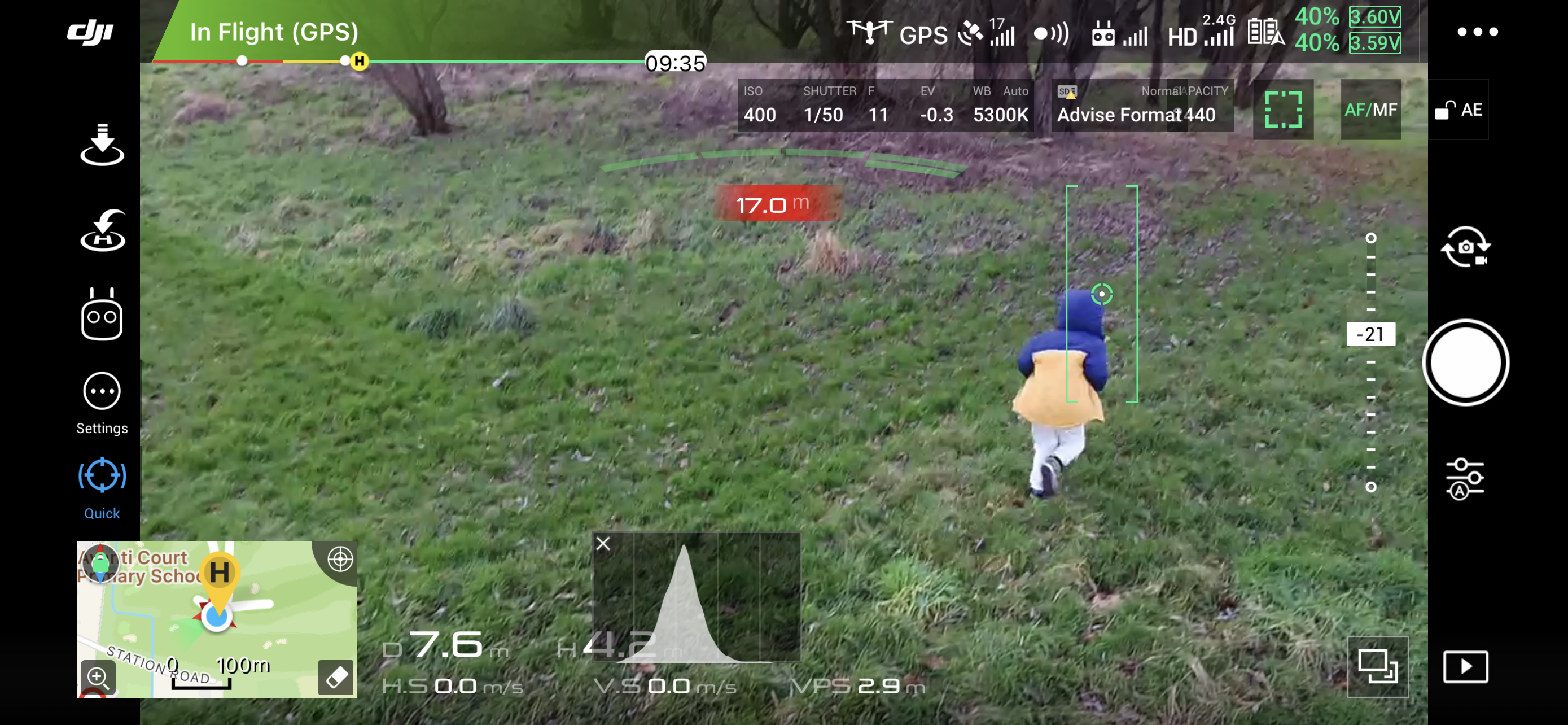
Finger-touches can also direct the drone; TapFly allows you to pull up the (disappointingly low quality) image from the built-in FPV camera and select a destination using that – the drone will then head that way and you can control the camera instead. In practice we found this somewhat unnerving; not being in direct control feels like the kind of thing aviation authorities don’t like, and is trusting a pricey aircraft to limited collision sensors.
DJI Inspire 2: The controller
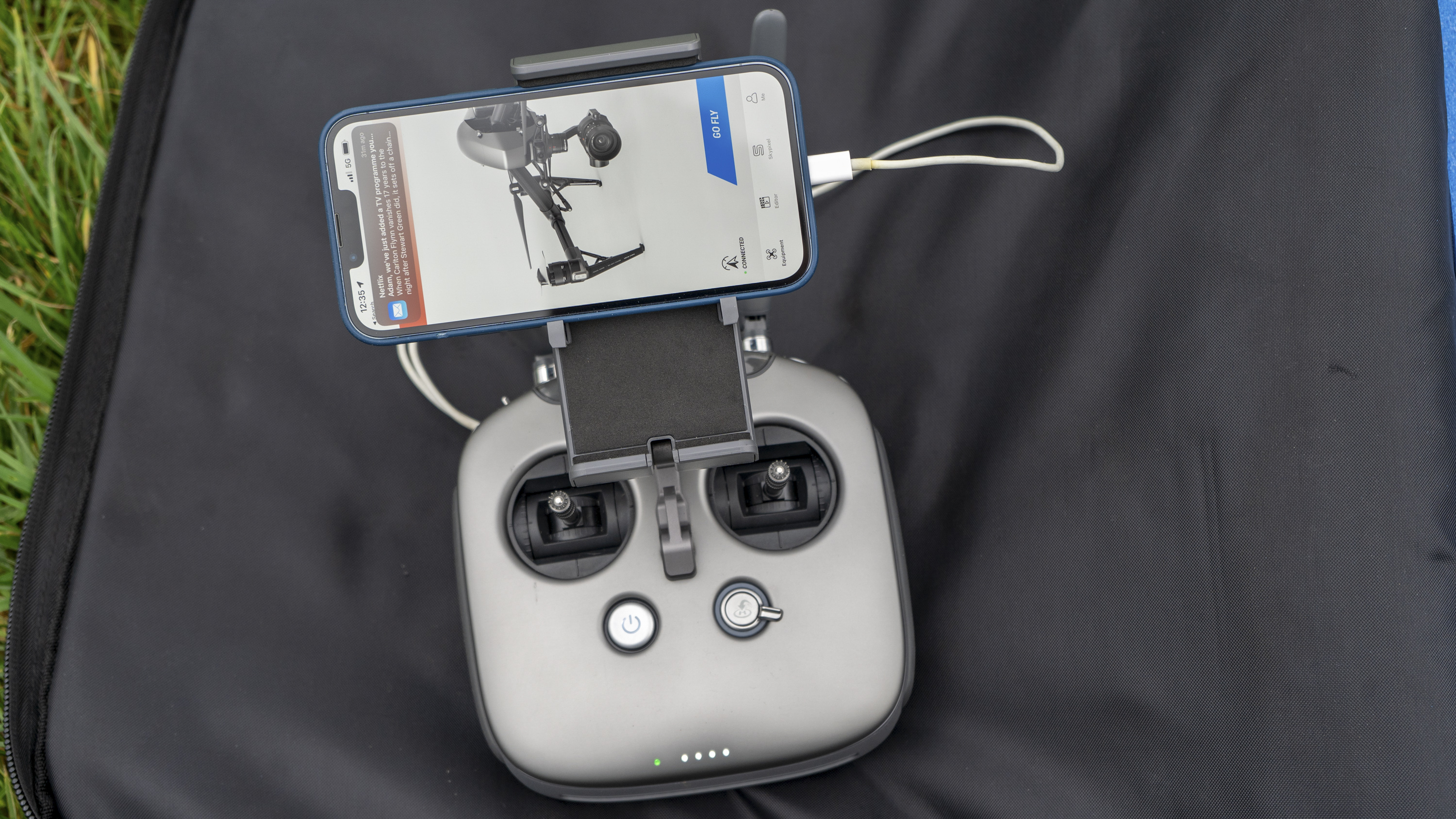
The Inspire 2’s controller is a different beast from those you might have become used to from DJI’s more portable offerings, but on the other hand it has a few more tricks up its sleeve. It features the original Lightbridge technology, with a range of 7km (4.3 miles), and can deliver both 1080p or 720p video feed and the FPV stream from the front camera. If there is one, the other operator needs to stand within 100m (in practice rather less) for things to work.
At the back of the controller are a sync connector, a USB-A and Micro-USB connector for connecting to a tablet or phone for the app – DJI Go 4 – and an HDMI socket for live video out. At the back the index fingers sit on two programmable buttons, while the shoulders also sport a wheels, buttons and switches including one which automatically takes on the task of zooming should you fit a motorized zoom lens like the Panasonic 14-42mm.
The fold-up screen holder never folds far enough away to require the unscrewing of control sticks – one of the few things about the Inspire which doesn’t take several steps to pack – but does feature nifty little fold out grabbers for phones (it has been designed assuming an iPad Mini or similar will be the device of choice).
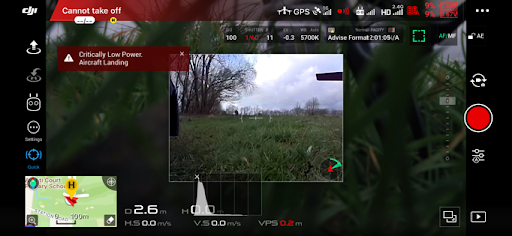
The controller is weighty; it’s hard to believe the size is necessary now but, on the other hand, there is no HDMI out on the Mavic 3, let alone the ability to use an iPad Mini.
In software terms, the Inspire 2 is powered by DJI Go 4, the app which is a lamented loss by Mavic 2 users upgrading to the Mavic 3. If you need to switch between the platforms, you’ll find the differences irksome – Go 4 can do more, but it does them differently and if you get used to one, then doing things differently is frustrating. Having a separate record video and image capture buttons on the remote, rather than switching modes, feels a lot more logical in a way though the newer Fly app on DJI’s consumer drones lets you keep different settings in different shooting modes. Whether this is handy or more confusing is a matter of opinion.
DJI Inspire 2: The accessories
While the Inspire 1 came with a nice carry case which was let down by a weak zip, DJI seemingly opted to make clear their shipping container wasn’t to be re-purposed for travel by building it of polystyrene. Admittedly it’s strong, with reasonably meaty feeling locking clips, in a style some roadies might be familiar with, but it doesn’t give the impression get you away from the road; there are some specialist backpacks out there but, inevitably, they’re not the easiest of shapes to work with.
On the plus side, the Inspire 2 does come with a charming battery charging hub; shaped like a black plastic drinks can, the sides open out and the chunky batteries can take their place – two (placed opposite each other) will charge at once. You are encouraged to buy and use batteries in pairs, so their lifetime is similar. It’s appreciated that you can also charge the controller at the same time via a split cable – a little inelegant maybe, but it does the job.
Zenmuse X5S Images
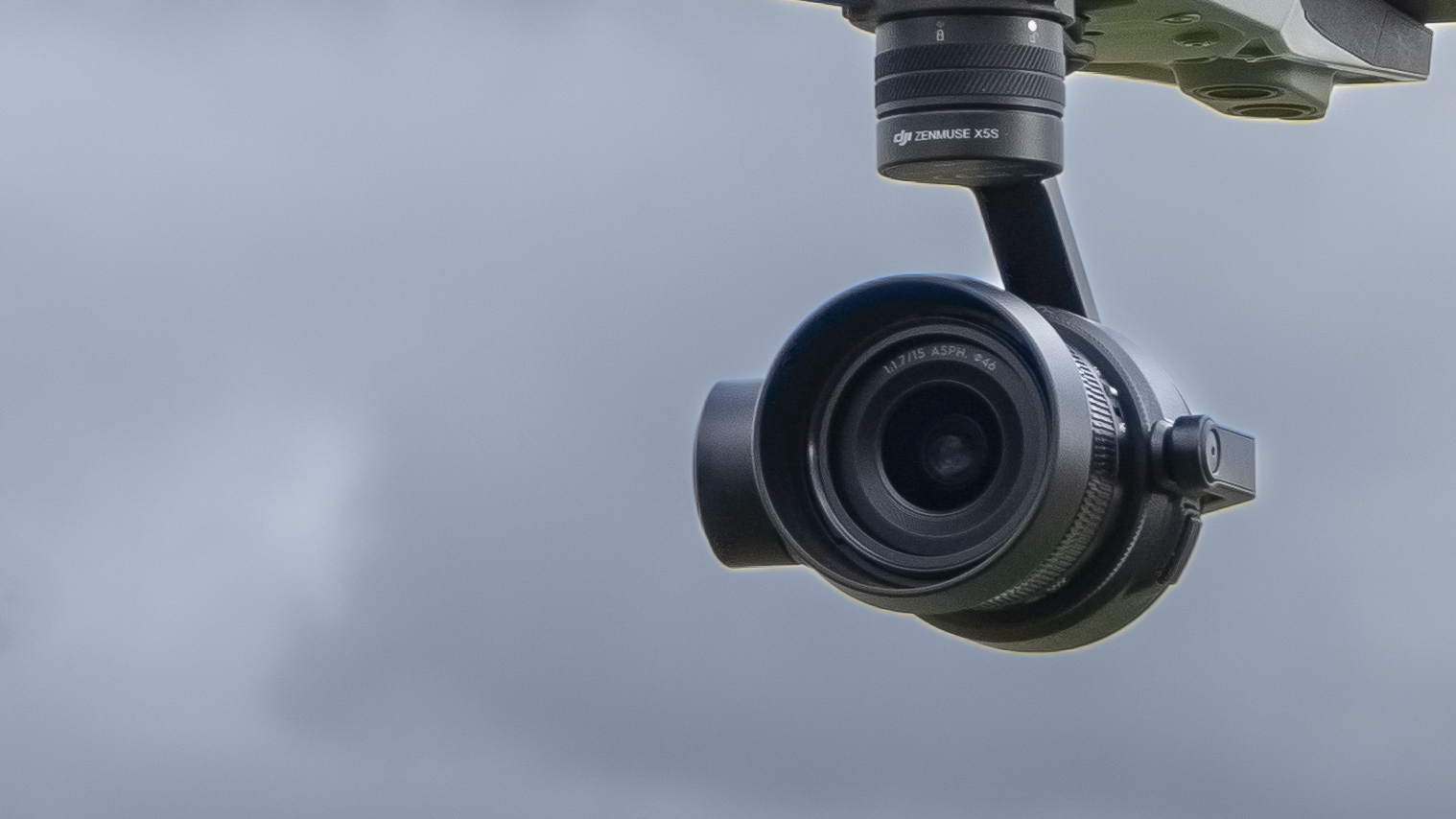
The Zenmuse X5S camera, paired with the standard Inspire 2 (no SSD) is how we tested the drone so we weren’t able to enjoy the 24MP stills or 6K CinemaDNG on offer from the Zenmuse X7. There was, nevertheless, a clear visual advantage to be seen in the Zenmuse X5S compared to most other drones you can click and buy. The X5S has a 4:3rds-sized sensor, similar to the Mavic 3 in that regard, meaning it catches a lot of light (the X7 is Super 35 sized so if you have the budget, you can have even more).
The lens, however, feels reassuringly lens-like; in fact the whole camera looks like, well, a camera. Whether it’s rational to have physical switches for AF/MF on a lens which is intended to be in the air, as DJI’s 15mm aspherical does, is another matter but the image is excellent from corner to corner which is more than can be said for some drones. It has to be said we didn’t get the same with our Panasonic pancake zoom, which definitely suffered from chromatic aberration in the corners, but on the other hand we still had a good quality optical zoom (which beats the pants off a Mavic 3).

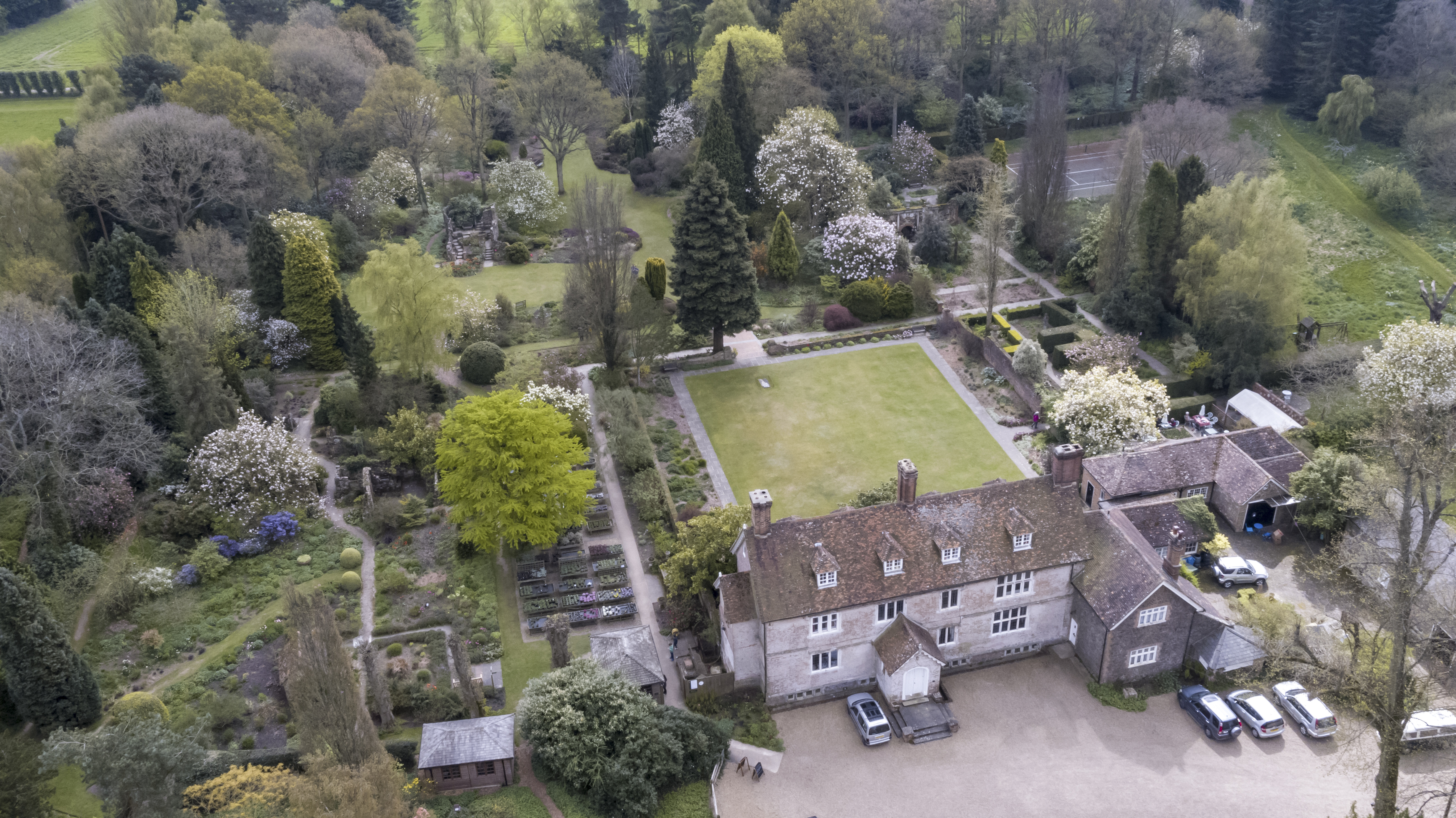
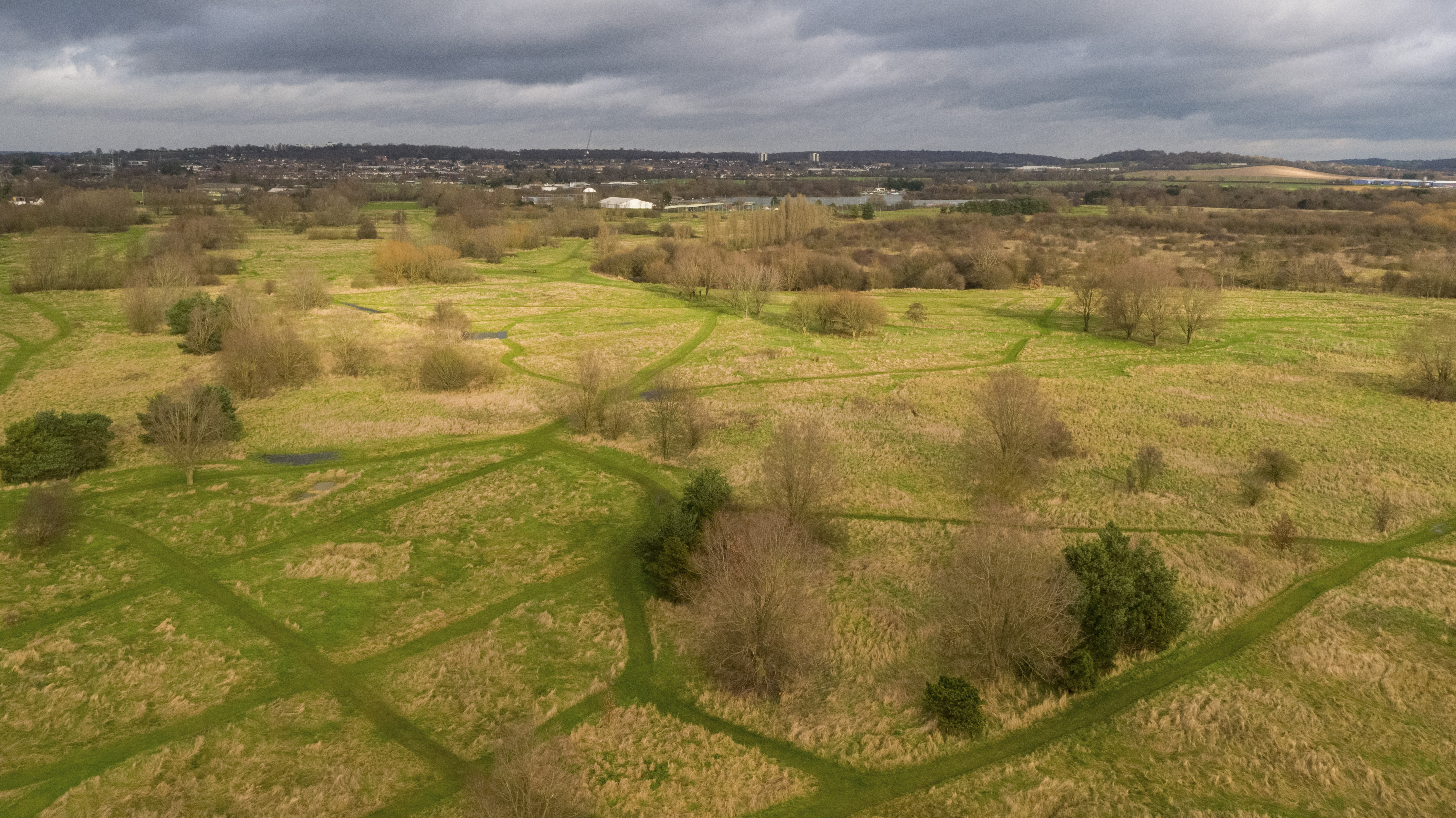
Video sample shot in 4K at 60fps
DJI Inspire 2 Verdict
In comparison to the incredible portability of a machine like the Mavic 3, the Inspire 2 has absolutely had its day, but much to our surprise once we went through the not inconsiderable task of getting the machine to a safe location, setting it up, running the calibration, and getting airborne, it was still clear that it had much to offer. Strangely, that includes subject tracking – which worked out of the box on the Inspire 2 but not the much newer Mavic 3. Thinking a little further ahead, though, the question will be whether the camera can offer you more
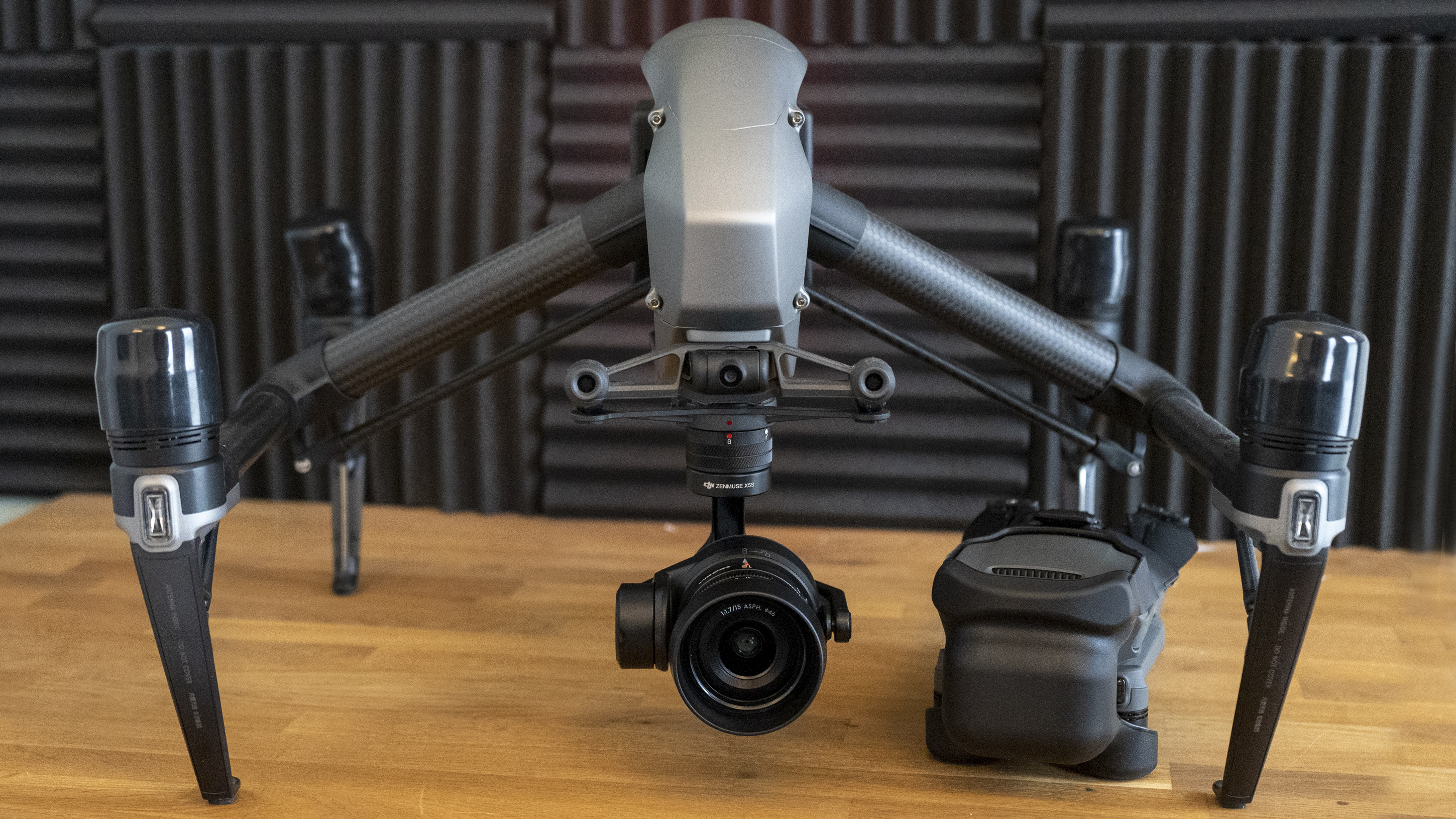
If you’re an enthusiast, we see very little reason for the Inspire 2 (other than the sheer joy of the form itself). For the most part, we have to assume that within weeks ActiveTrack will allow you to follow a subject successfully with the Mavic 3 and for significantly less cash if you don’t feel the need to record in ProRes. Will it do as good a job at rotating the drone where the Inspire 2 can turn the camera? Soon we’ll know (Check our Mavic 3 review or news section). Given the ever-tightening regulations, especially in Europe and the UK where the Inspire 2 finds itself in the A3 weight tier which will make things more and more awkward (150m).
For lone creators – YouTubers and the like – the Inspire 2 can sound tempting but there are other machines which offer easier routes to live streaming. Photographers, on the other hand, if they have 4:3rds lenses, might be able to make use of the system to get thoroughly unique aerial perspectives. DJI offer weights to counterbalance different lenses, and the parallax effect on a zoom is something which might not be worth the price of admission to everyone, but is a valuable feather to the bow.
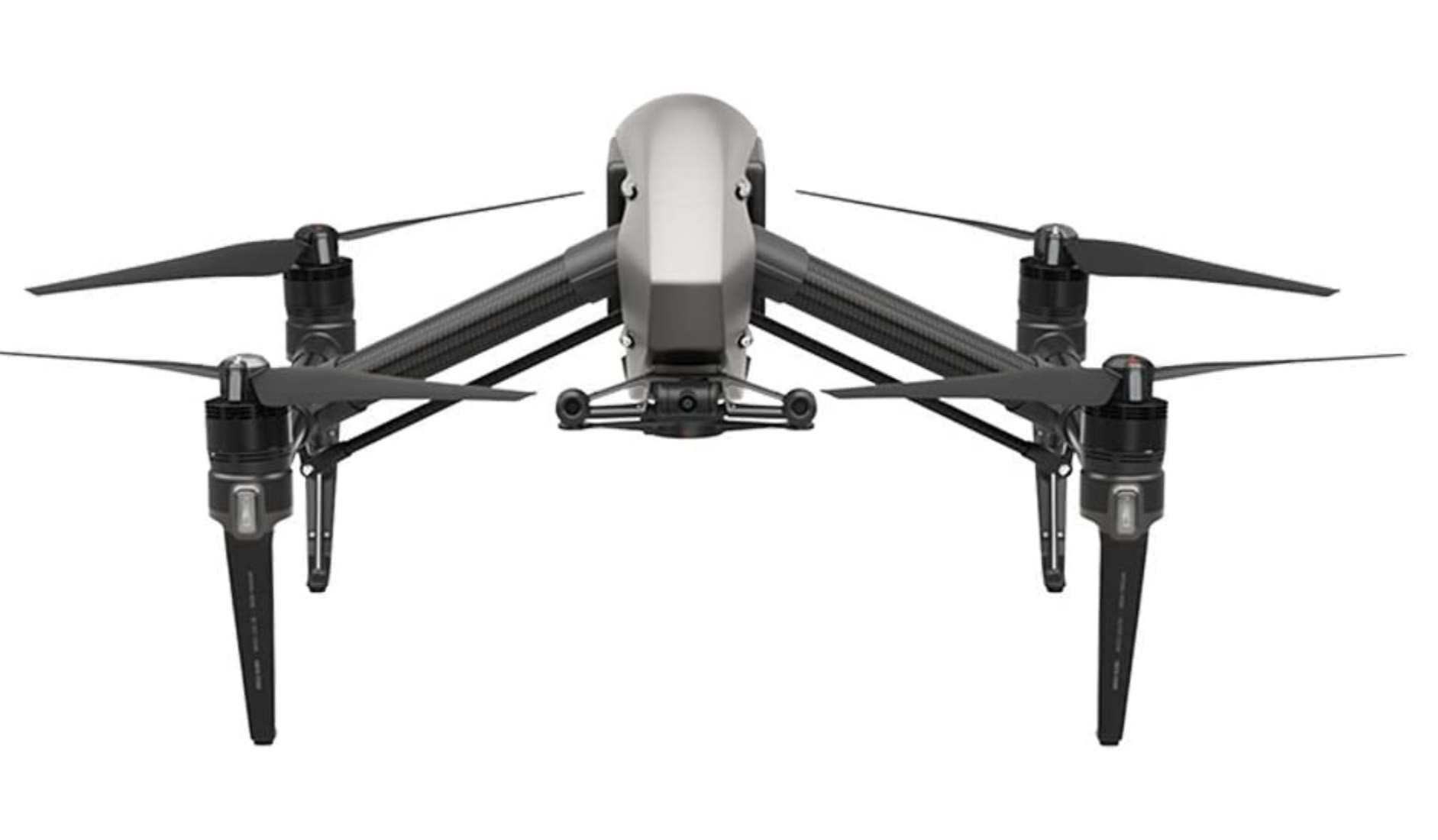
As a professional the Inspire 2, however, offers most in terms of value. The cost of entry is almost reasonable. The battery life – a little over 20 minutes is basically all you get with a decent camera – is frustrating, but there are opportunities to hire the TB50 batteries. The worry is that, when the Inspire 2 came along, it swept aside its predecessor despite expectations that the cameras and batteries would work on the next generation. That made for a better drone, albeit a pricier one, but it also suggests that early 2022 might be the time to wait and see vis-à-vis the Inspire/Zenmuse ecosystem rather than take the risk on batteries or a camera which may not befriend a 2022 model.
A final word on the Inspire 2; it impresses beyond those in the know. We know people who have been hired for professional jobs because they have one (even though all the shots used in the final edit came from lighter aircraft with longer battery lives). Sometimes size matters (or at least makes an impression).

With over 20 years of expertise as a tech journalist, Adam brings a wealth of knowledge across a vast number of product categories, including timelapse cameras, home security cameras, NVR cameras, photography books, webcams, 3D printers and 3D scanners, borescopes, radar detectors… and, above all, drones.
Adam is our resident expert on all aspects of camera drones and drone photography, from buying guides on the best choices for aerial photographers of all ability levels to the latest rules and regulations on piloting drones.
He is the author of a number of books including The Complete Guide to Drones, The Smart Smart Home Handbook, 101 Tips for DSLR Video and The Drone Pilot's Handbook.
